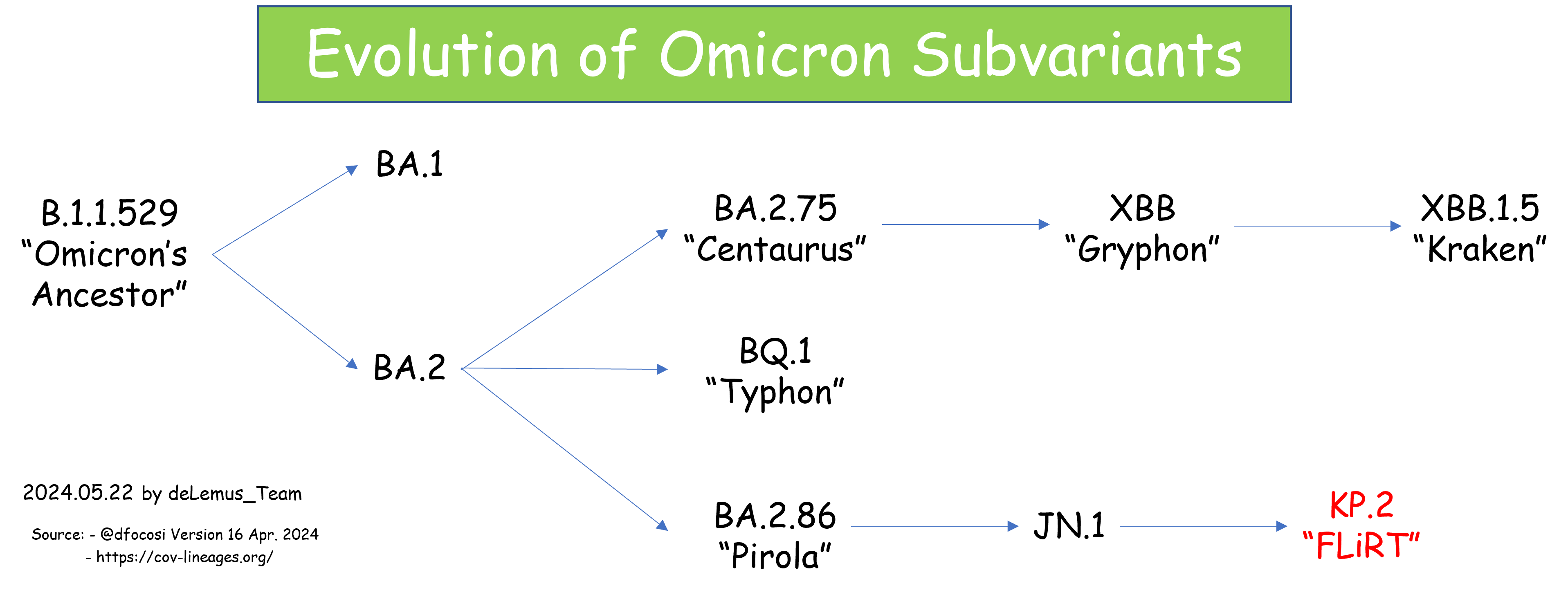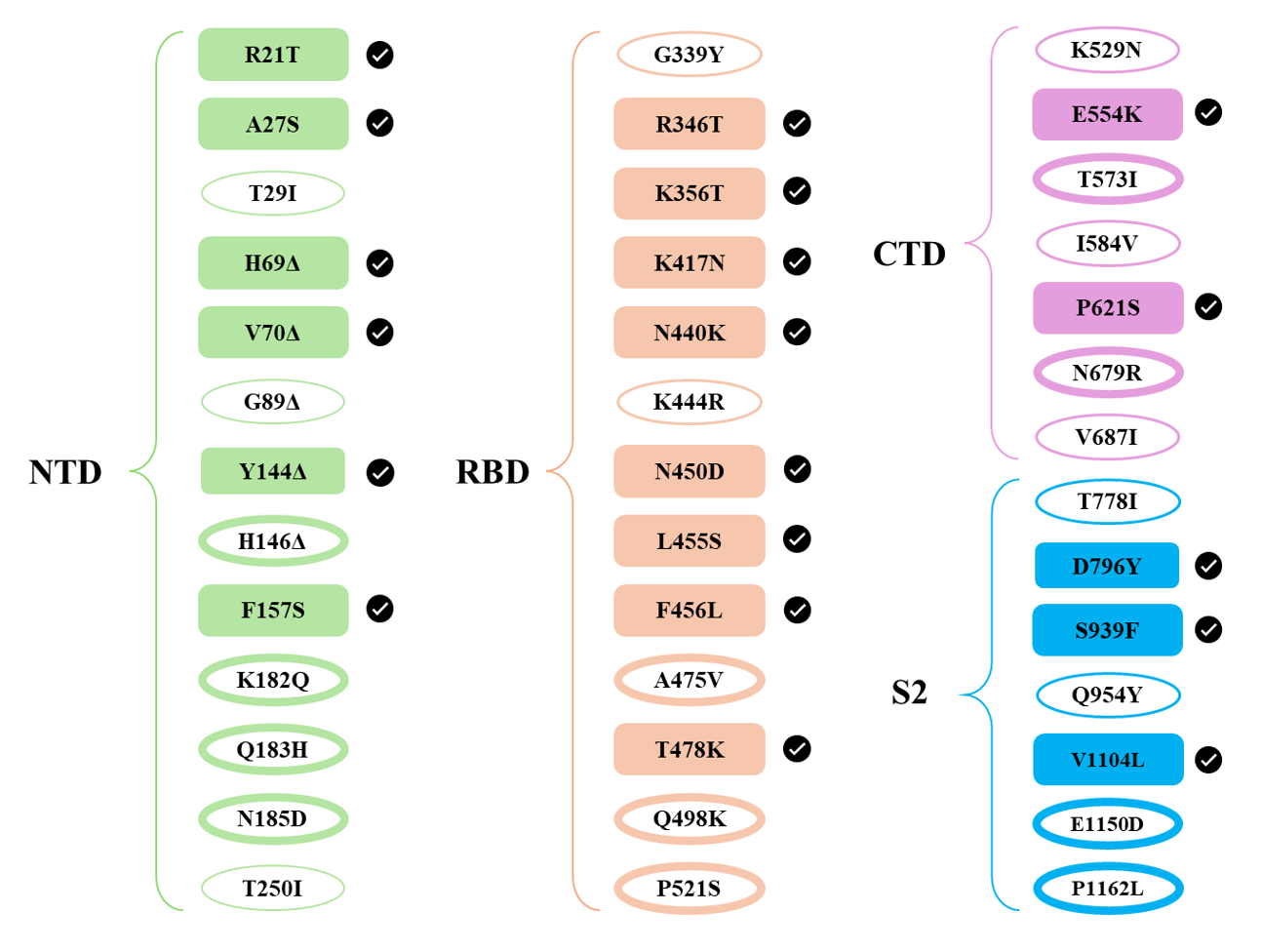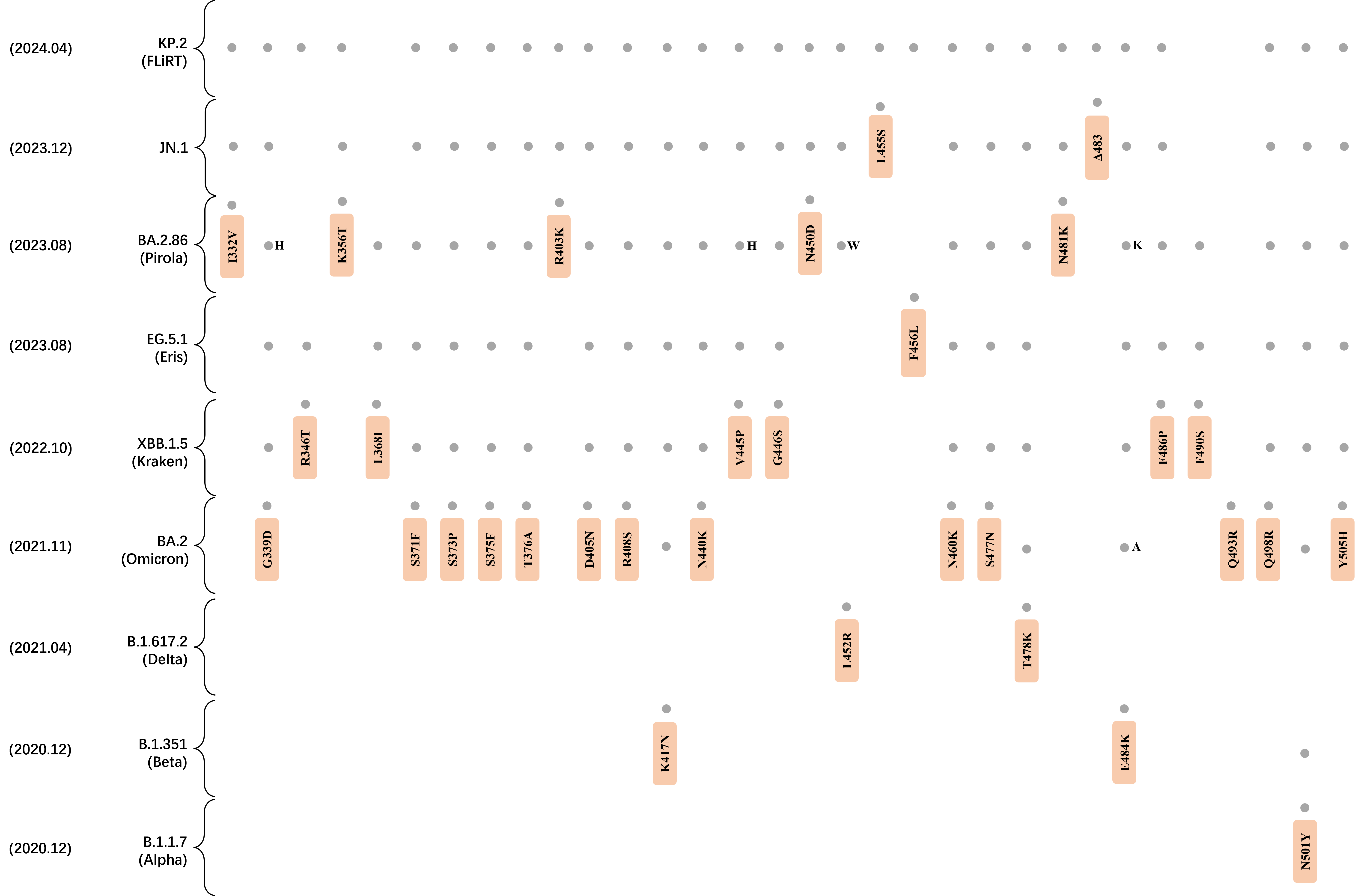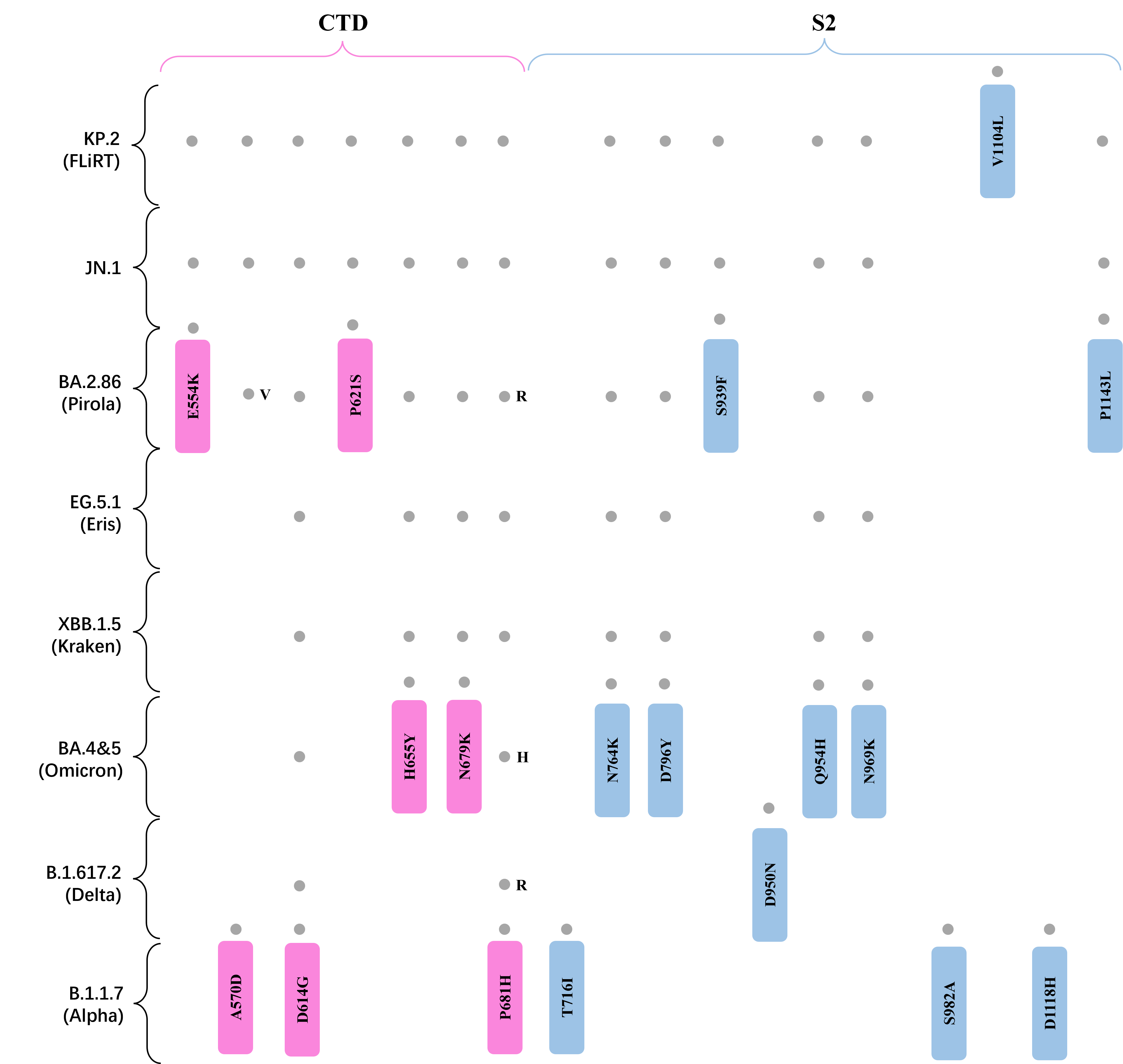KP.2
The KP.2 (JN.1.11.1.2) variant is the most recently emerged variant of SARS-CoV-2 that descended from the JN.1 lineage.
Background
The World Health Organization has elevated JN.1 from a variant under monitoring (VUM) to a variant of interest (VOI) on 18 December 2023, and it has become the dominating strain across the globe. Recently, the KP.2 variant, a descendant of JN.1, is designated as a VUM on 3 May 2024, swiftly after its emergence.[1]

The KP.2 variant exhibits 2 distinct mutations in RBD, R346T and F456L, as depicted by its nickname "FLiRT", accompanied by V1104L in S2, in comparison with the JN.1 strain. Amino acid residues 346 and 456, located within epitopes which are targets of neutralizing antibodies, have been observed undergoing substitutions in past variants, like R346T in BQ.1 & XBB, and F456L in EG.5 & HK.3.[2]
KP.2 Mutations
In 2024.03, the mutations outlined and confirmed by KP.2 are listed:

Featured Mutations: L455S, F456L
As a characteristic mutation of the JN.1 variant, L455S was discovered at the beginning of the epidemic of JN.1. On the one hand, it reduced the binding capacity of RBD-ACE2 during in vitro ACE2 binding tests, but on the other hand, it increased viral infection in pseudovirus tests (using BA.2.86 strain as a reference).[3] This result may be caused by L455S altering the RBD open-close conformation dynamics at the partially open stage.[4] The substitution of leucine with serine results in a shift from a non-polar to a polar amino acid, causing an increased hydrophilicity, which could drive the exposure of the receptor binding motif to solvent. Now that the F456L mutation continues to occur and the hydrophobicity is further reduced, we can speculate that the spike protein is gaining a higher opening tendency.

Main Mutations
KP.2's main mutations in other prevalent variants:


References
- Tracking SARS-CoV-2 variants. (2024). https://www.who.int/activities/tracking-SARS-CoV-2-variants
- Statement on the antigen composition of COVID-19 vaccines. (2024). https://www.who.int/news/item/26-04-2024-statement-on-the-antigen-composition-of-covid-19-vaccines
- Kaku, Y. et al. Virological characteristics of the SARS-CoV-2 JN.1 variant. Lancet Infect Dis 24, e82 (2024).
- Ray, D., Le, L., & Andricioaei, I. Distant residues modulate conformational opening in SARS-CoV-2 spike protein. Proc Natl Acad Sci U S A 118, e2100943118 (2021).